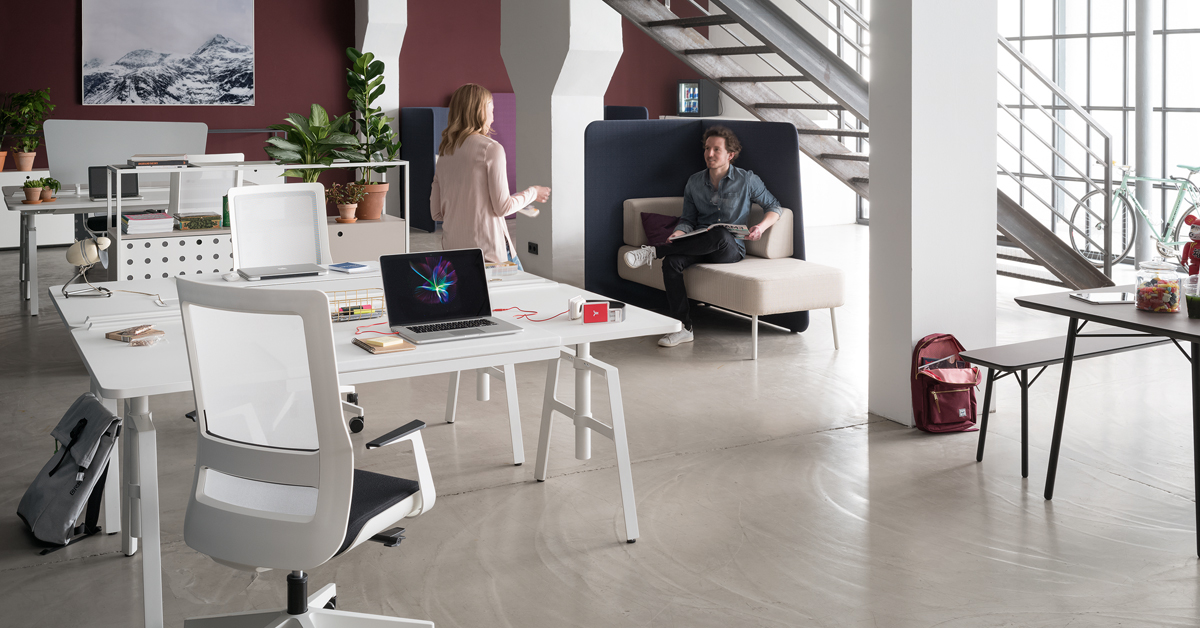Team office: more than just a room to work in.
By Franz Gurtner, 15.05.2020

Open-plan office, combi office, team office, management office and cellular office. The notions of what is meant by the different types of offices vary widely. After all, the types of offices used in a company are as varied as the areas of responsibility. In this article we take a look at the often quoted but rarely spatially realised team office.
Collaboration before confidentiality.
As different as team offices are designed in companies, depending on the respective area, this type of office has some basic things in common that characterise it as such. Cooperation and communication are paramount, the work processes are geared towards collaboration. Efficient working in a team office means short communication channels and instantly sharing information. Team members should therefore also work together in the same space. Open-plan or cellular offices are not suitable for this purpose, but “open units” – small-structured, yet open zones – are called for. These are visually and acoustically shielded to a greater or lesser extent depending on the area and purpose. The shielding from the outside should be chosen in such a way that concentrated team and project work is guaranteed. For reasons of efficiency, the number of employees who share a common workspace in the team office is 20 people at the most. They need the opportunity to share information quickly and to easily keep up to date.
A team office must offer more than just a place to work. The focus is on cooperation and requires the appropriate support in terms of space and equipment. The aim is to provide an environment that is geared to the team’s tasks entirely in line with the principle of activity-based working: concentrated (team) work, coordination and communication or creative brainstorming. If necessary, an acoustic and visual retreat should also be available, e.g. in the form of a telephone booth or a silent room. The workstations are ideally equipped with electric height-adjustable desks. This not only increases the ergonomic quality, but also creates space for coordinative, spontaneous conversations while standing. Teams are also supported by digital workspaces. The shared (team) cloud often takes over the storage space function in the form of shared storage locations. Metres and metres of wall units are a thing of the past – at least in team offices.
Scrum gives the team office a new dynamic.
Integrated or separate communication areas should facilitate the high demand for internal coordination within the team. Contemporary multimedia equipment also envisages flip charts and pin boards for creative exchange. One meeting is hot on the heels of the next one with Scrum teams in particular. With this agile working method, the team office virtually becomes a project office with flexible settings, which can take place with different team members depending on the project phase. This also requires the flexible adaptability of space and furnishings. There are no limits to the creativity of the design: high tables for short meetings, media furniture for brainstorming sessions and middle zones equipped with upholstered furniture or tables and benches that are also used for team meetings and lunches together.
Clear rules of the game are required for cooperation.
The openness of this type of office and the subjective perception of the team members also poses challenges for the office space, which are best solved at the office design stage: acoustic and climatic comfort must be created for the whole team. On the one hand, this requires structural measures, on the other hand it also requires rules and a willingness to compromise for each individual employee.
In general, people’s conduct plays a crucial role for a successful team: it brings together individuals with different experiences and needs. What constitutes a team’s strength under normal circumstances can quickly become a weakness if employees do not get along well with each other. Ongoing disputes and friction put cooperation within the entire team at risk – even the best office space is of no use then. Inconsistencies should therefore be addressed at an early stage and ideally be cleared up with the help of team coaching, before the work together is affected and the entire team suffers.




